By Russell Nichols
Fake $100 bills. Sex toys. A mannequin head. A vintage Pepsi can, 1976 bicentennial edition. Vacuum cleaners.
This isn’t some random haul from a local flea market. These are some of the objects unearthed by River City Waterway Alliance volunteers from rivers, creeks and riparian habitats around the Sacramento region. Since the group officially formed in January 2023, it has held 136 cleanup events in six months, removing more than 530,000 pounds of trash and debris.
Big screen TVs. A punching bag. An automotive magazine from 1912. A bunch of batteries. Carpets and clothing. Countless shopping carts. Needles.
RCWA has about 40 regular volunteers, who have completed more than 4,200 volunteer hours to date. They do four to five cleanups every single week. Even on the Fourth of July, they tackled an abandoned encampment across from Sutter’s Landing Park, pulling out more than 3 tons of trash. The days are long, the work grueling. They don’t have power equipment at their disposal. They use shovels and cultivators (four-pronged rakes), hay hooks (for pulling out textiles and mattresses) and hand winches for things deeply buried.
“The one thing we haven’t found yet is a body, a person,” says David Ingram, a Sacramento attorney and one of the four RCWA co-founders. “I’m hoping we can avoid that, but you never know when you’re going into these areas what you’re going to find.”
The volunteers say they do these cleanups because if they don’t, who will? But the trash they find covered up is just the tip of a much larger, more layered issue, where limited government resources, California’s housing crisis and growing homeless population, and environmental apathy converge like rivers in a delta.
“You see the edge of a plastic bag and you realize it’s an entire bag of trash and under that it’s a carpet and under that it’s a bike frame,” Ingram says. “We’re trying to erase decades of neglect and abuse.”
No time to waste
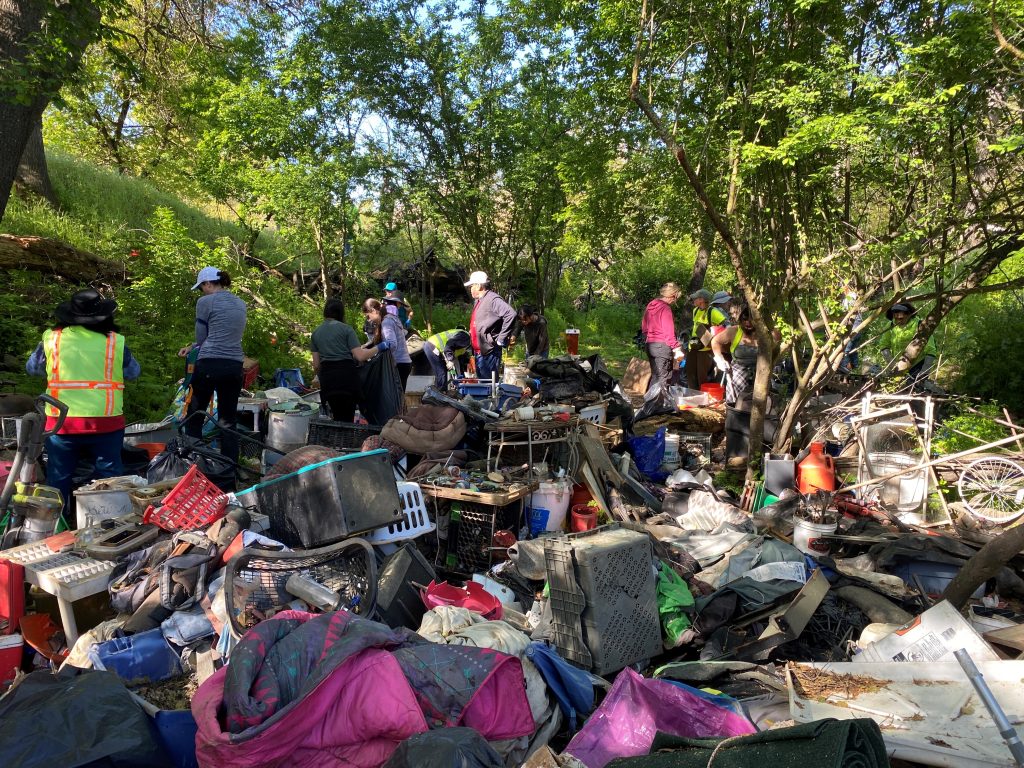
Due to flooding and water currents, trash left by a river or creek can get buried or carried away to other areas quickly. RCWA co-founders — Ingram, Lisa Sanchez, Kathleen Ford and Mark Baker — knew each other from volunteering in a different cleanup crew. They decided to form a new group to focus specifically on waterways.
Picking up the garbage was tough enough. Removing the stuffed bags was its own challenge. They couldn’t drive vehicles into the more remote areas. They had to haul the bags by hand, sometimes even taking debris home to put in their own dumpsters. Those filled up fast. Leaving them behind even for a day was a waste.
“When we have to leave the bags behind, they can get ripped open,” Ingram says. “Sometimes by animals, but most of the time, humans. … All the trash gets redistributed back to the creek. It’s disheartening.”
Fortunately, Sacramento County Regional Parks lent a hand — and some equipment. The parks department has worked with groups over the years for various cleanup projects. According to Director Liz Bellas, RCWA’s vision aligned with its own ongoing efforts, so deploying dump trucks and Bobcats, and workers who know how to operate them, made sense. She praises the volunteers for their communication and dedication to cleaning the waterways.
“Everyone has the same goals in mind as far as they want to keep our waterways clean and address the issues,” Bellas says. “Nobody wants to see trash and debris floating down the river to the delta and beyond.”
‘Mountains of garbage’
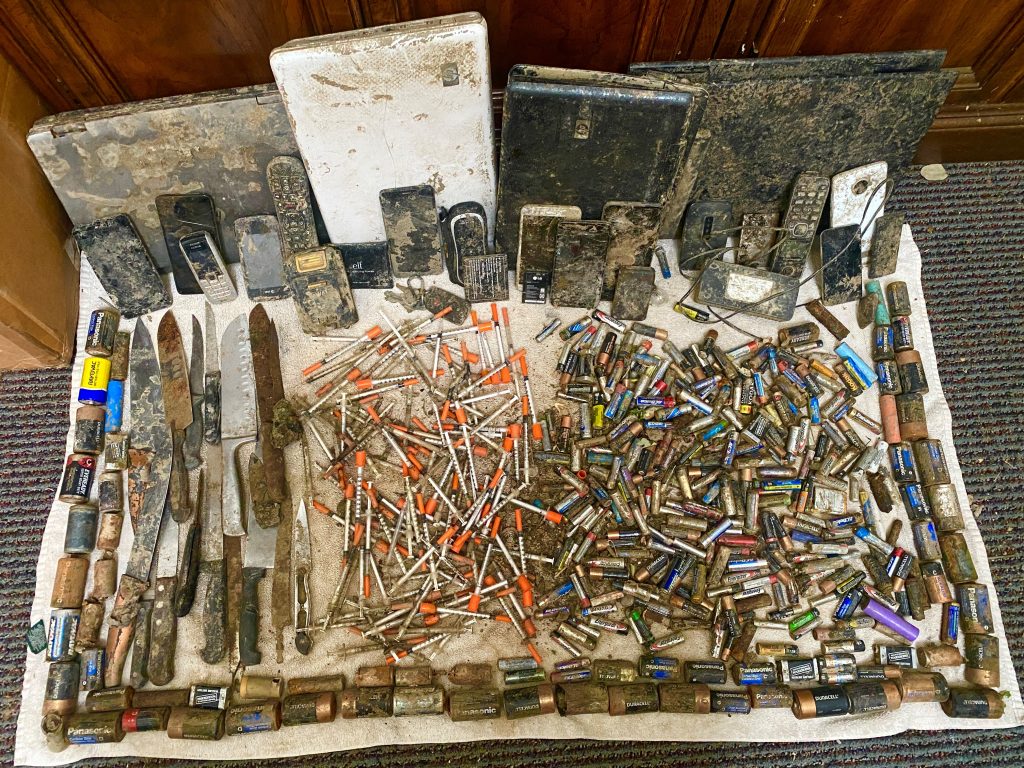
Still, the reality is, the trash keeps coming, and support is hard to come by. Scott Webb, superintendent of the American River Flood Control District, found this out firsthand when he joined the district in 2019, overseeing a small staff.
“The amount of garbage is phenomenal, like holy heck,” Webb says. “Six people is not a lot of people to be picking up mountains of garbage. I’m supposed to be working on levees, not picking up trash.”
The State of California and the U.S. Army Corps of Engineers have specific parameters to maintaining the levees, which include keeping the grass short for inspections and fire fuel reduction. But trash swept up in the American River and portions of various creeks end up along the 38 miles of levees the district maintains.
“We need to mow these levees to keep grass down,” Webb says, “and you can’t mow trash. It destroys the mowers.”
The cost to remove the trash is paid for by district funds, he says, which aren’t reimbursed. He appreciates RCWA’s efforts in helping clean the waterways, which he says account for about 75% of the levee garbage. But he still has trash on top of the levee and on the land side too.
“There’s no other agencies,” Webb says. “I don’t have solutions, to tell you the truth. We’re struggling here.”
Historically, the City of Sacramento has been less supportive of these types of cleanup efforts, Ingram says, but “that tide is starting to turn.” The city’s Department of Utilities supports many organizations, such as RCWA, through grant funding and helping with cleanup events by disposing of garbage collected by volunteers, according to Carlos Eliason, the department’s media and communications specialist. He also referenced a program that maintains certain waterways in its flood control system.
“The program includes inspections, repairs, vegetation management, and debris removal on levees, creeks, canals and ditches,” Eliason said in an email. “Debris may include abandoned encampment material or trash.”
The program has no formal name, he says, but officials refer to it as the “critical infrastructure maintenance program.”
Harsh realities
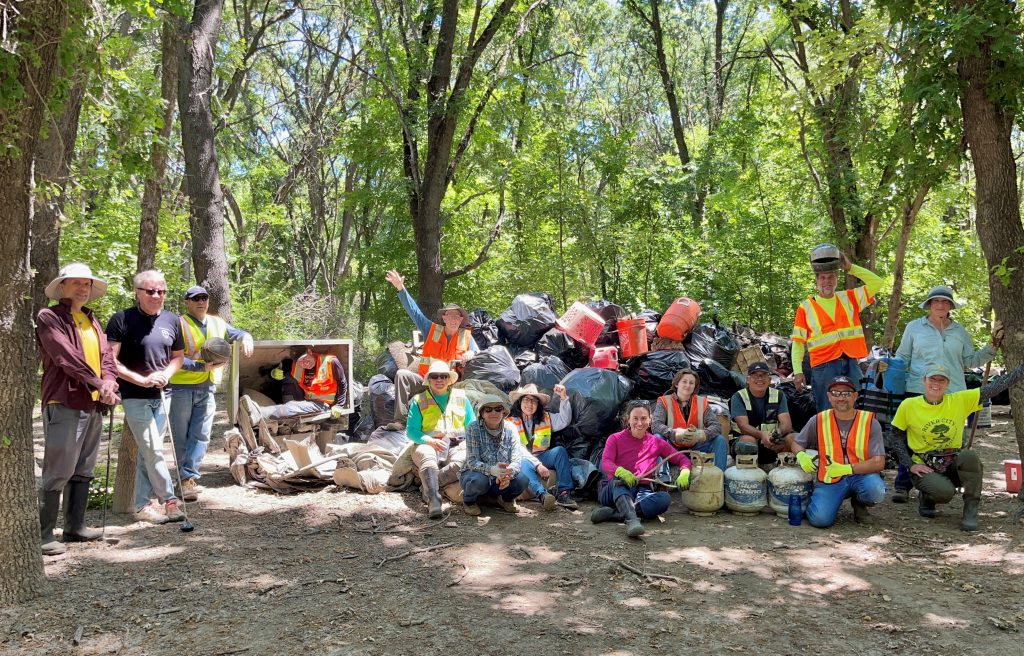
During each phase of maintenance, utilities staff work with the city’s Department of Community Response to “help ensure the safety and well-being of those camping in impacted areas,” Eliason says. Then Community Response coordinates with local service providers to perform outreach and connect people with services.
Niki Jones, an advocate with the Sacramento Homeless Organizing Committee, says outreach efforts have been “piecemeal” at best. For years, she says, the committee has asked the city and county to establish a more official trash pickup regimen with people in encampments.
“If they really think the trash is a public health emergency, they would be planning a sanitation and prevention strategy around that trash,” Jones says, “not a removal strategy of humans.”
With forced displacements, people in encampments have limited time to plan next steps, let alone pack up their things, Jones adds. Trash left behind is the byproduct of a “cruel system” of neglect and abandonment that separates real humans from the environment, she says.
“The way they want to abuse the narrative and law is to make it about other people’s health and safety,” Jones says. “They don’t like to see how it really looks.”
RCWA’s YouTube channel has more than 100 videos documenting its cleanup efforts. There was some social media chatter that the clips showed abandoned encampments without mentioning the housing crisis. But Ingram says the aim was to spotlight the harsh realities.
“We feel if the public sees how bad it is, if people are forced to look at the horrific conditions, they will see it’s not safe, it’s not clean, it’s not sanitary,” Ingram says. “We’re exposing a problem and hoping folks who make important decisions to fix the root cause will take it more seriously than before and help folks who need help.”
Call to restoration
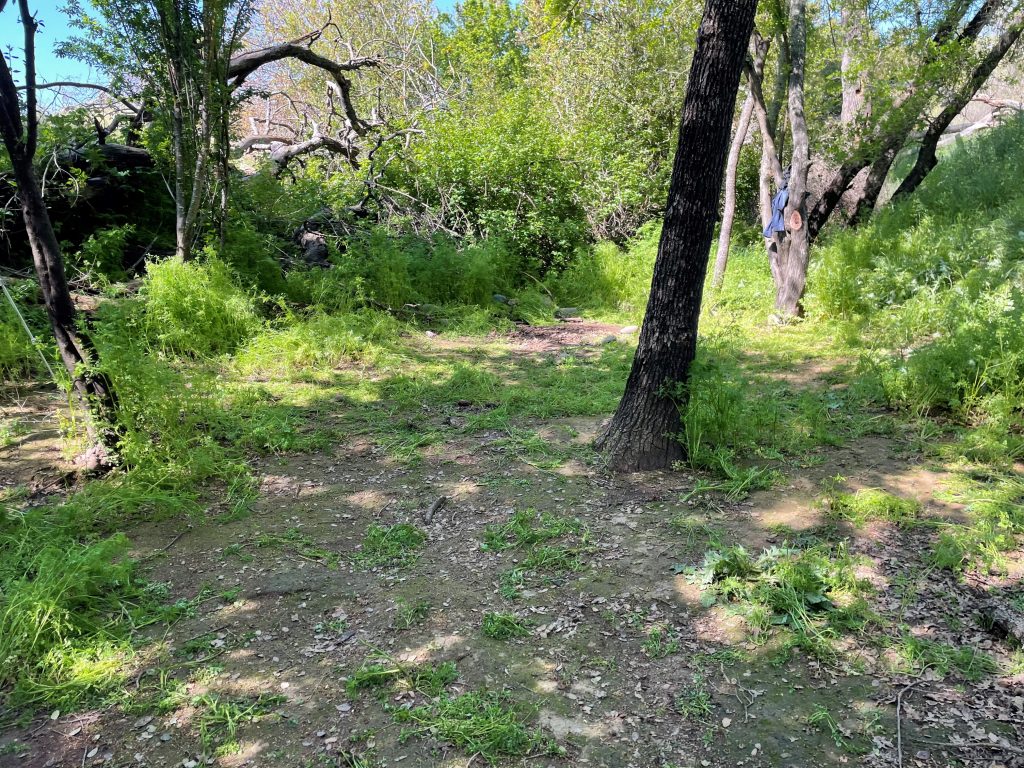
One thing the co-founders want to make clear: RCWA is not a litter-picking group. The volunteers are focused on restoring waterway areas, not beautifying them. Thousands of species have been displaced because of trash, garbage, and human and pet occupation in sensitive ecological areas, Ingram says.
For instance, salmon used to swim up Steelhead Creek to reach Dry Creek, once a productive salmon spawning ground. Due in large part to the trash and debris deposits in the channel, Ingram says very few salmon make it that far, which threatens the biological diversity of native salmon species in the area.
“These areas should be a local jewel, but they’ve been abused so extensively that some parts literally look and smell like landfills,” Ingram says. “Our focus is not to simply beautify areas so they look pretty, but rather to reverse decades of ecological damage.”
At 72, Bill Templin has seen the local waterways at their worst. He recalls a trip to Steelhead Creek, calling it “a creek running through a solid waste disposal site.”
After 30 years as a hydrologist with the U.S. Geological Survey, Templin retired in 2003 and got involved with the Sacramento Area Creeks Council. He helped shepherd its 30-year tradition of spring cleaning known as Creek Week. He also leads the Arcade Creek Adopt a Creek Project, where volunteers gather to preserve and protect the local waterway.
Connecting with RCWA on various cleanup events has been invaluable, Templin says. Recently, Templin has noticed the bird population flourishing again. Egrets fly in to feed. Ducks and ducklings swim by while volunteers pull out refuse.
“I can’t say enough about how much they have helped,” Templin says of RCWA. “It’s just like a dream come true to us and I think a dream come true to the Sacramento community.”
This story is part of the Solving Sacramento journalism collaborative. Solving Sacramento is supported by funding from the James Irvine Foundation and Solutions Journalism Network. Our partners include California Groundbreakers, Capital Public Radio, Outword, Russian America Media, Sacramento Business Journal, Sacramento News & Review, Sacramento Observer and Univision 19.

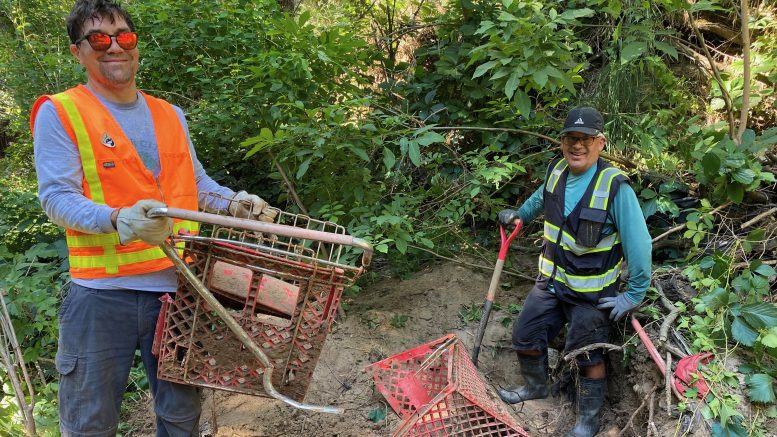

I’ve been on many river cleanups, and it’s always heartbreaking and infuriating. If the homeless cared one whit about anything but themselves they would make a visible and consistent effort to clean up their filth. At least pool your garbage together next to roads where crews can pick it up. Absent that, I’m all out of sympathy. You’re worth far less than the jewel that is the ARP. Used to be a jewel.